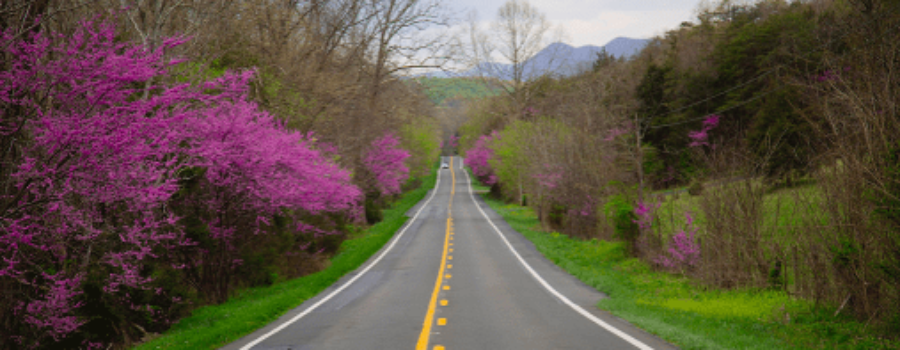Beauty abounds no matter which direction you travel in Page County. No matter the season, there is always something to delight when traveling on either Highway 211 or 340. In the springtime, redbuds and dogwoods adorn the hillsides. Summer provides a shaded route. The fall can be brilliant with tulip poplars, sycamores, maples and other hardwoods in full color and winter opens up vistas for glimpses of the Shenandoah River and rolling hillsides. In 2008, the Department of Conservation and Recreation and the Virginia Department of Transportation agreed and welcomed both Highways 211 and 340 into the Virginia Scenic Byways program.
But it almost didn’t happen!
A 1999 plan to widen Highway 340 from Front Royal to Luray that would have made it four or five lanes endangered a historic battlefield, land recognized by the state as an area of “special interest,” and an eligible rural historic district designation. This was the threat that brought Alliance legacy group Scenic 340 members together and kept them engaged for more than a decade in the transportation planning process, advocating for context sensitive solutions instead of massive widening.
Thankfully, VDOT abandoned the harmful plan in favor of road improvements that better respected the region. Twenty years later, these same citizens celebrated when Highway340 was recognized as a Virginia Scenic Byway, a designation for which the road would not have been eligible without their commitment to a good plan decades before.
Scenic Byway Designation: What you should know
With more than 2,500 miles in the program, the Virginia Scenic Byways designation presents unique opportunities for visitors to travel at a slower pace and explore the natural, cultural, historical, recreational and archaeological amenities of Virginia’s back roads. The Virginia General Assembly passed the State Scenic Highway and Virginia Byway Act in 1966. The legislation defined a scenic byway as a road having aesthetic or cultural value, leading to or within areas of historical, natural or recreational significance.
The Virginia Department of Transportation (VDOT) partners with the Virginia Department of Conservation and Recreation (DCR) in evaluating roads for byway designation. Proposed road segments are evaluated on a number of criteria including providing important scenic values and experiences, a diversity of viewsheds, access to scenic, historic, recreational, cultural, and natural resources and an opportunity for leisurely motoring. Like a Scenic River designation, anyone may request a Scenic Byway designation, but the local government must adopt a resolution of support for the designation before VDOT and DCR can consider.

